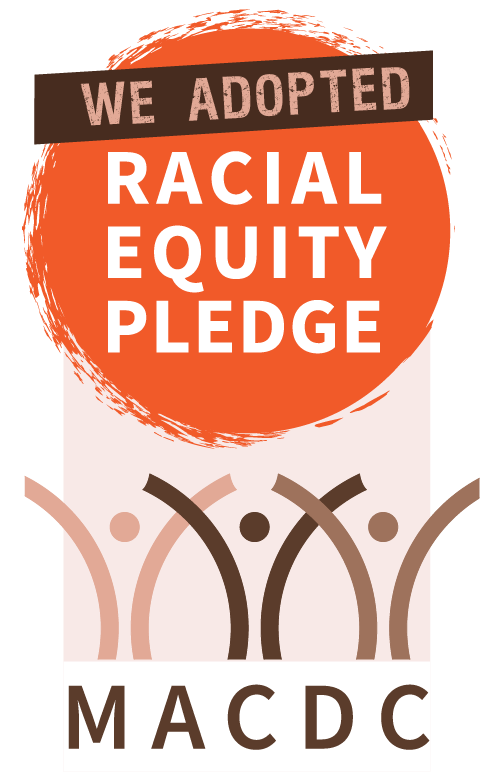In 1988, the Fair Housing Act was amended to include people with disabilities as a protected class against whom discrimination is prohibited. Two years later, the Americans with Disabilities Act was passed. When passing the Americans with Disabilities Act, Congress found that “physical or mental disabilities in no way diminish a person’s right to fully participate in all aspects of society” and that “discrimination against individuals with disabilities continue to be a serious and pervasive social problem.” 42 U.S.C. §12101. While there have been great strides in curbing discrimination against people with disabilities in the last 30 years, it remains prevalent in all aspects of life, including housing.
People with disabilities are afforded some protections against discrimination in addition to those offered to all other protected classes. These additional protections are the right to reasonable accommodations and reasonable modifications to help them use and enjoy their housing like everyone else. Fair housing protections afforded to all protected classes include prohibitions against refusal to rent, different terms and conditions, discriminatory statements, and threats, coercion, and retaliation. Discrimination against people with disabilities may look like:
- “No pets, no exceptions.”
- “Sorry, we don’t do special parking.”
- “I’m going to need an extra fee for your animal.”
- “What’s wrong with you? Are you sure you will be able to take care of the place?”
- “If you ask me to change anything, I won’t renew your lease.”
Individuals with disabilities. What does it mean to be a person with a disability for the purpose of civil rights protections like those in the Fair Housing Act and analogous state law? A person is protected against discrimination on the basis of disability if they have:
- “(1) a physical or mental impairment which substantially limits one or more of such person’s major life activities,
- (2) a record of having such impairment, or
- (3) being regarded as having such an impairment.” (42 U.S.C. §3602(h); see also, M.G.L. 151B:1, 17)
Major life activities include a range of tasks such as standing, sitting, walking, breathing, hearing, seeing, communicating, speaking, reading, and many others. To be substantially limited in one of these activities does not mean that the person is completely unable to engage in the activity, but it must be substantial compared to most people. For example, a person may be able to walk short distances as most people do but not for more than a few minutes. This would be a substantial limitation. Similarly, even if a person can engage in basic oral communication and conversation, they may need to review more complex topics like lease rights in writing. This would qualify as a substantial limitation even though they may appear to be able to engage in the activity of oral communication.
Reasonable Accommodations and Reasonable Modifications
People with disabilities are entitled to reasonable accommodations and reasonable modifications to give them an opportunity to equally use and enjoy their apartment.
Reasonable Accommodations. Reasonable accommodations are changes in “rules, policies, practices, or services, when such accommodation may be necessary to afford such person equal opportunity to use and enjoy a dwelling.” 42 U.S.C. §3604(f)(3)(b); See also state law M.G.L. 151B:4(7A).
Common reasonable accommodations include:
- An exception to a no pets policy to accommodate an assistance animal.
- A designated or close parking space to accommodate a mobility impairment.
The main ideas about reasonable accommodations:
- There is a rule, policy, practice or service;
- A person has an impairment;
- Because of that impairment, the rule or policy prevents full use and enjoyment of the rental;
If the above are true, then a person can request an accommodation. If reasonable, the housing provider must grant the accommodation. Note that accommodations need not be cost-neutral and are at the housing provider’s expense.
Reasonable Modifications. Reasonable modifications are structural changes to existing premises “if such modifications may be necessary to afford such person full enjoyment of the premises.” 42 U.S.C. §3604(f)(3)(a) See also state law M.G.L. 151B:4(7A).
Common reasonable modifications include:
- Adding a ramp
- Accessible door handles or grab bars
- Accessible showers
The main ideas about reasonable modifications:
- The law applies to all covered dwellings, regardless of when the building was built
- Modifications must be granted, but may be conditioned on tenant returning the space to the original condition when:
- Under federal law, reasonable and would affect future tenants’ use
- Under Massachusetts law, it would materially affect marketability of housing
- Who pays?
- Under federal law, the tenant pays for reasonable modifications
- Under Massachusetts law, the tenant pays for reasonable modifications unless:
- The building/property has 10 or more units
- The property is publicly-assisted housing (not tenant-based vouchers)
- Approving requests – housing providers may require:
- A permit (when appropriate)
- A description or proposal depending on complexity
- A workman or contractor reasonably capable of completing the work
- Modifications to common areas:
- At tenant’s expense, unless Massachusetts exceptions or federal financial assistance (not a tenant-based voucher) apply;
- Alternative design of housing provider should prevail if cost-neutral or provider pays the difference;
- Tenant does not have to pay for restoration to original condition;
- Housing provider is responsible for upkeep if it is to an area typically maintained by the provider.
Evaluating Requests for Reasonable Accommodations and Modifications. There is a three-step test to determine if a reasonable accommodation or modification request should be granted:
- Step 1: Does the tenant have an impairment?
- Tenant’s responsibility to demonstrate.
- Step 2: Is there a connection between the impairment and the request?
- Tenant’s responsibility to demonstrate.
- Step 3: Is the request reasonable?
- Housing Provider’s burden to demonstrate that it is unreasonable.
The interactive process is designed to answer the questions in the three-step test. The interactive process is designed to be flexible, timely and efficient, and promote an exchange of information between the tenant and housing provider.
The interactive process begins with an initial request for an accommodation or modification.
- Requests do not have to use the words “reasonable accommodation”;
- May be oral or in writing;
- Do not (initially) require supporting documentation;
- Must describe the nature of the impairment; and
- Must describe the connection between the impairment and the request.
Once the housing provider has received a request for accommodation or modification, they have an opportunity to ask for information about the effects of the impairment and its connection to the requested accommodation. This part of the interactive process covers the first two prongs of the test.
- Step 1: Does the tenant have any impairment?
- If the impairment is obvious, the housing provider should not ask for supporting information.
- If the impairment is not obvious, the housing provider may ask for information about the effects of the impairment from a reliable third party.
- Housing providers cannot require medical records.
- Housing providers cannot require a doctor’s note. Other clinicians, case managers, or knowledgeable people can provide the information.
- Step 2: Are the effects of the impairment related to the requested accommodation or modification?
- If the effects of the impairment are obvious and connected to the request, the housing provider should not ask for supporting information.
- If the effects of the impairment are not obvious and connected to the request, then the housing provider may ask for information from a reliable third party.
- Housing providers cannot require medical records.
- Housing providers cannot require a doctor’s note. Other clinicians, case managers, or knowledgeable people can provide this information.
While a doctor’s letter or service provider’s letter is not always necessary, it is often used to satisfy the first two prongs of the test to assess reasonable accommodations. A quality service provider letter is helpful to the tenant and the housing provider because it makes it easier to understand the impairment and how the accommodation will help. The best supportive letters contain the following information:
- The writer’s education and experience, and current professional position;
- Relationship to the tenant, including familiarity and duration;
- A very specific description of the effects of the impairment; and
- A very specific description of how each requested accommodation/modification is connected to and will assist the person with the impairment.
Tenants requesting letters from their providers should specifically express that these elements are helpful, and should feel free to provide their clinician with a sample letter or description of a reasonable accommodation letter. Sample letters are included in the resources below.
- Step 3: Is the request reasonable? All reasonableness analysis is fact-specific and looks at both the benefits to the tenant and the burdens to the housing provider. There are three categories under which reasonableness is assessed:
- Fundamental Alteration. An accommodation is not reasonable if it would alter or change the essential nature of the housing provider’s operation;
- Undue Burden. An accommodation is not reasonable if it would impose an administrative or financial burden on the housing provider. Factors include:
- Whether the accommodation meets the tenant’s needs
- Benefits to the tenant
- Cost of the accommodation (need not be cost neutral)
- Financial or administrative resources of the housing provider
- NOTE – if an accommodation is deemed unreasonable, the housing provider should work with the tenant to find an alternative accommodation;
- Direct Threat. An accommodation is not reasonable if it would create a direct threat to the health or safety of the tenant, other residents, or the housing provider. All assessments of direct threat must be individualized and may not be based on generalizations or stereotypes. Key factors include:
- The nature, duration, and severity of the risk;
- The likelihood of occurrence; and
- Whether there are mitigating measures, such as accommodations.
Accessible Design. New buildings (built after 1991) and older buildings that have been renovated must meet design standards that make the building and space accessible to people with disabilities. There are a variety of different state and federal laws and building codes that set standards for accessibility. Housing providers considering renovation or new construction should consult design experts to make sure their space is accessible.
The Fair Housing Act divides accessible design standards into seven categories. Each category has specific design requirements. These requirements are occasionally updated, so it is important to make sure the most recent materials are consulted. Those seven categories are:
- Accessible entrances and routes (interior and exterior)
- Accessible and useable common areas
- Usable doors
- Accessible routes to and through the residential unit
- Accessible light switches, outlets, and environmental controls
- Reinforced bathroom walls for grab bars
- Useable kitchens and bathrooms
Note: A housing provider with a building that meets all accessible design standards may still need to make a reasonable modification. The accessible design standards were developed to be accessible for most people with disabilities. A particular person’s impairment may still require additional modification.
- Housing that must comply with accessible design standards. The Fair Housing Act and state law have similar definitions. All buildings built after 1991 and older buildings that are renovated (including reconstruction or rehabilitation) must meet accessibility standards. This means that even an “accessible” residence may need to be modified to meet a tenant’s particular needs.
Resources
Understanding your rights
- HUD Overview
- Bazelon Center for Mental Health Law Fair Housing Guide
- Disability Law Center Guide on Emotional Support Animals
- Disability Law Center Guide on Reasonable Accommodations
- MassLegalHelpGeneral Tips, service provider letter
- Bazelon Center for Mental Health Law Sample Service Provider letter
Technical guidance on accommodations and modifications
- HUD/DOJ Joint Statement on Reasonable Accommodations
- HUD/DOJ Joint Statement on Reasonable Modifications
- HUD FHEO Assistance Animal Guidance
Technical guidance on accessible design












